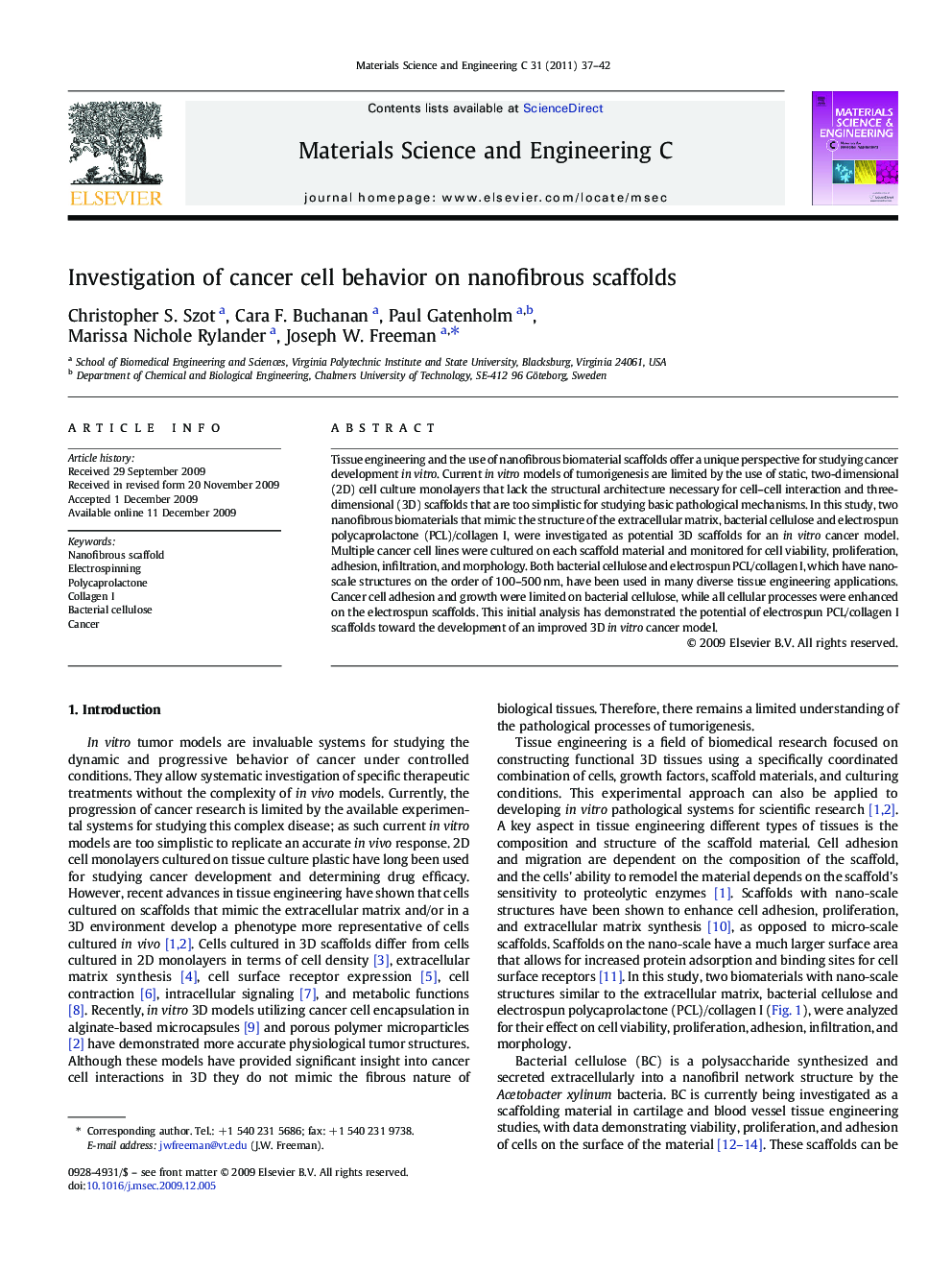| Article ID | Journal | Published Year | Pages | File Type |
|---|---|---|---|---|
| 1429854 | Materials Science and Engineering: C | 2011 | 6 Pages |
Tissue engineering and the use of nanofibrous biomaterial scaffolds offer a unique perspective for studying cancer development in vitro. Current in vitro models of tumorigenesis are limited by the use of static, two-dimensional (2D) cell culture monolayers that lack the structural architecture necessary for cell–cell interaction and three-dimensional (3D) scaffolds that are too simplistic for studying basic pathological mechanisms. In this study, two nanofibrous biomaterials that mimic the structure of the extracellular matrix, bacterial cellulose and electrospun polycaprolactone (PCL)/collagen I, were investigated as potential 3D scaffolds for an in vitro cancer model. Multiple cancer cell lines were cultured on each scaffold material and monitored for cell viability, proliferation, adhesion, infiltration, and morphology. Both bacterial cellulose and electrospun PCL/collagen I, which have nano-scale structures on the order of 100–500 nm, have been used in many diverse tissue engineering applications. Cancer cell adhesion and growth were limited on bacterial cellulose, while all cellular processes were enhanced on the electrospun scaffolds. This initial analysis has demonstrated the potential of electrospun PCL/collagen I scaffolds toward the development of an improved 3D in vitro cancer model.
